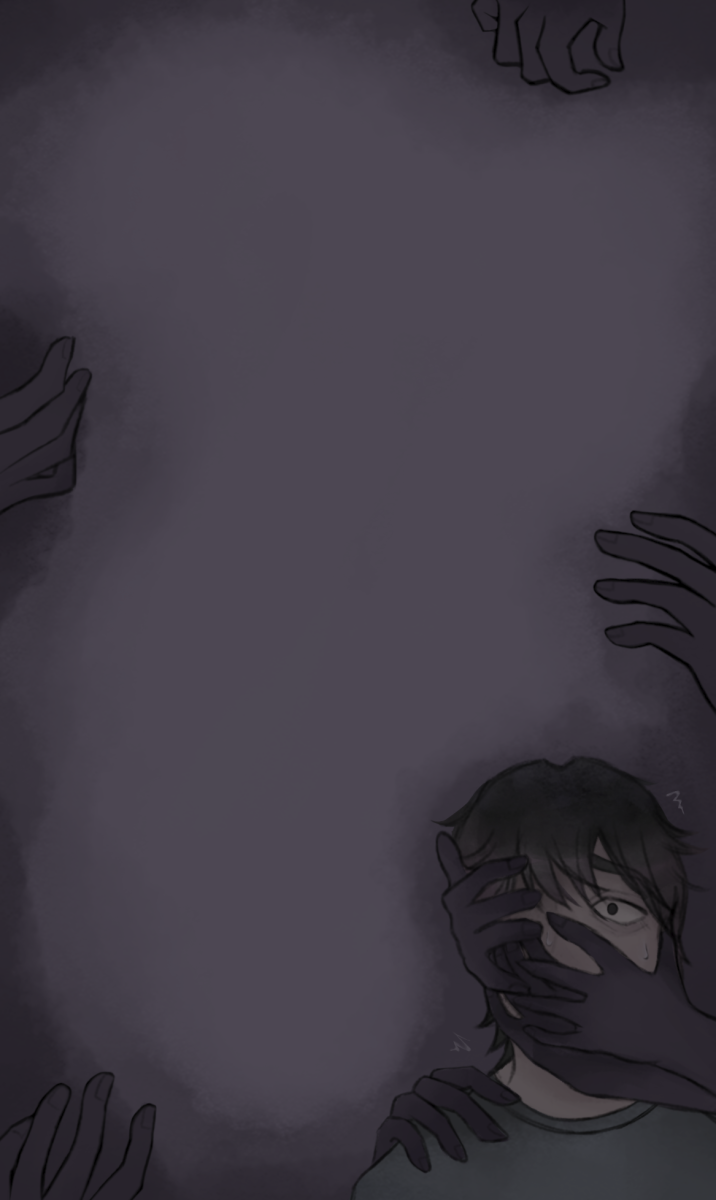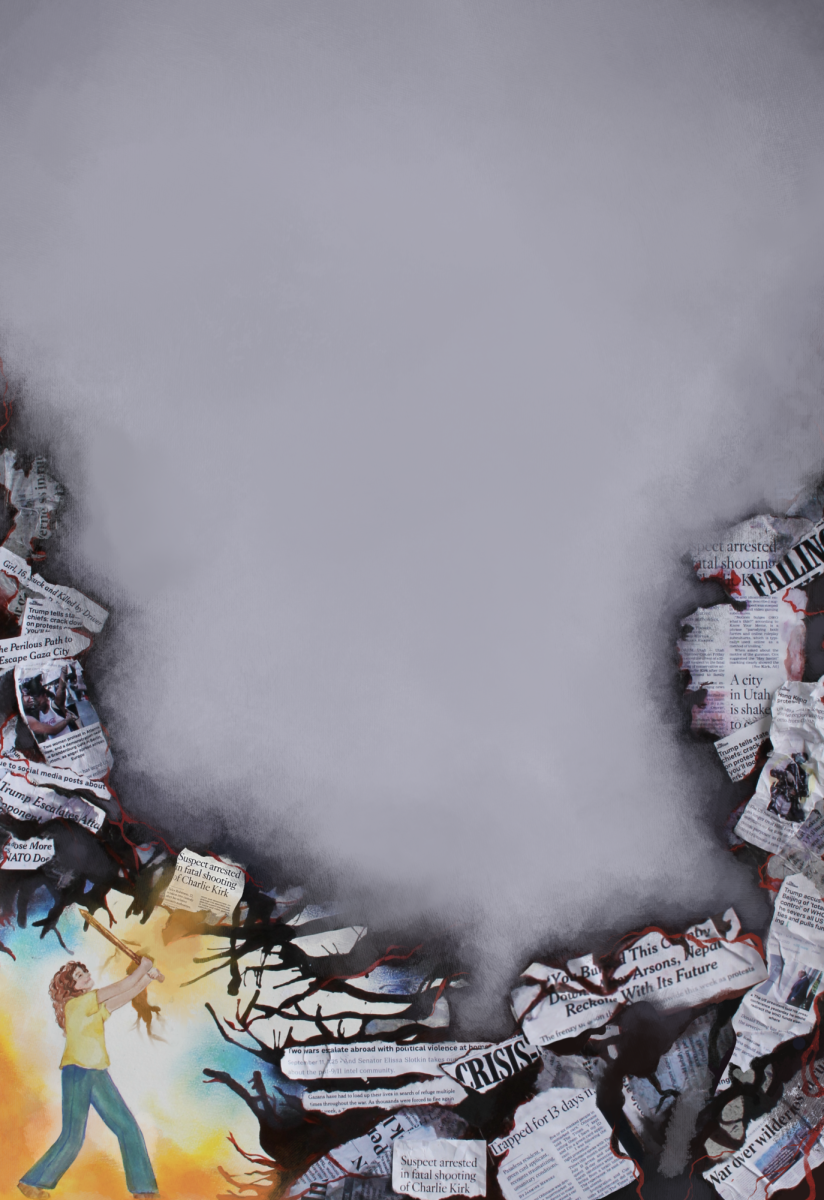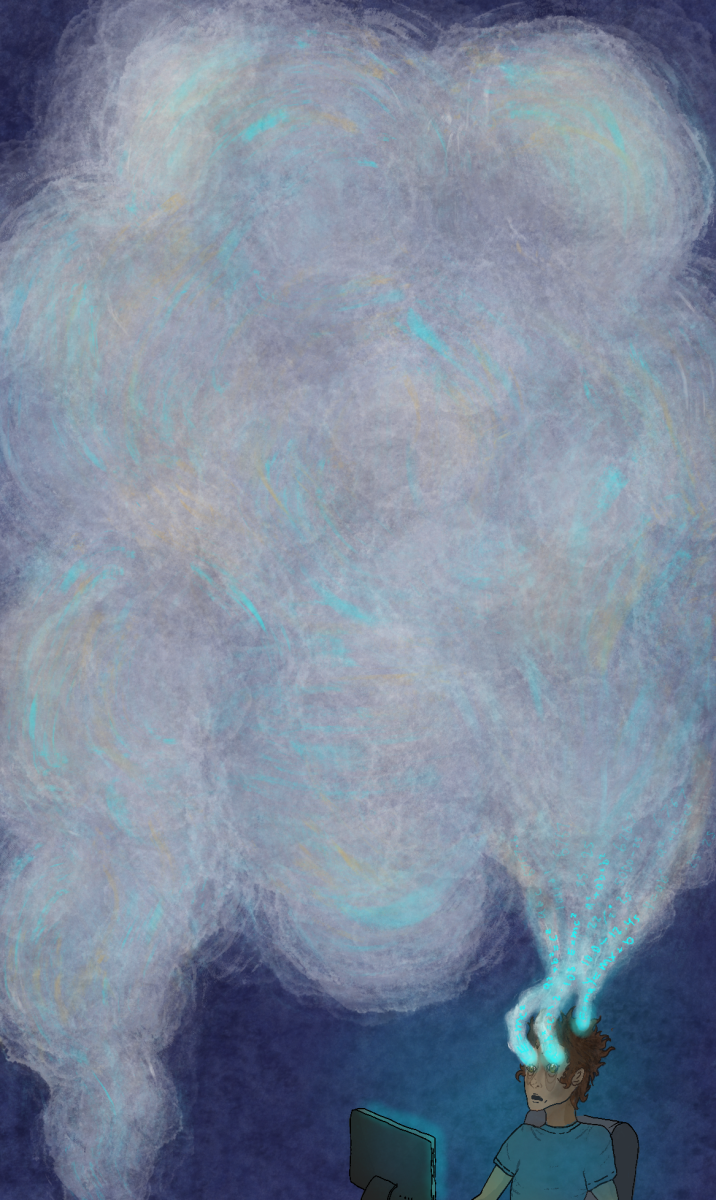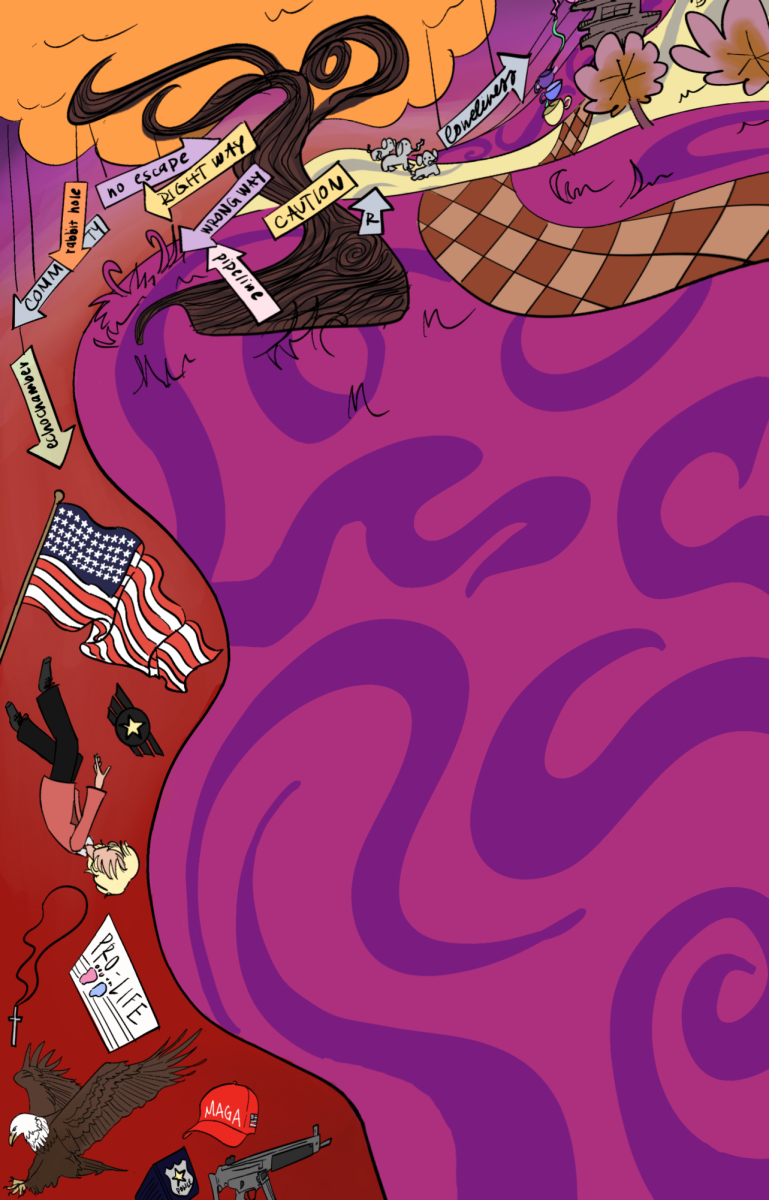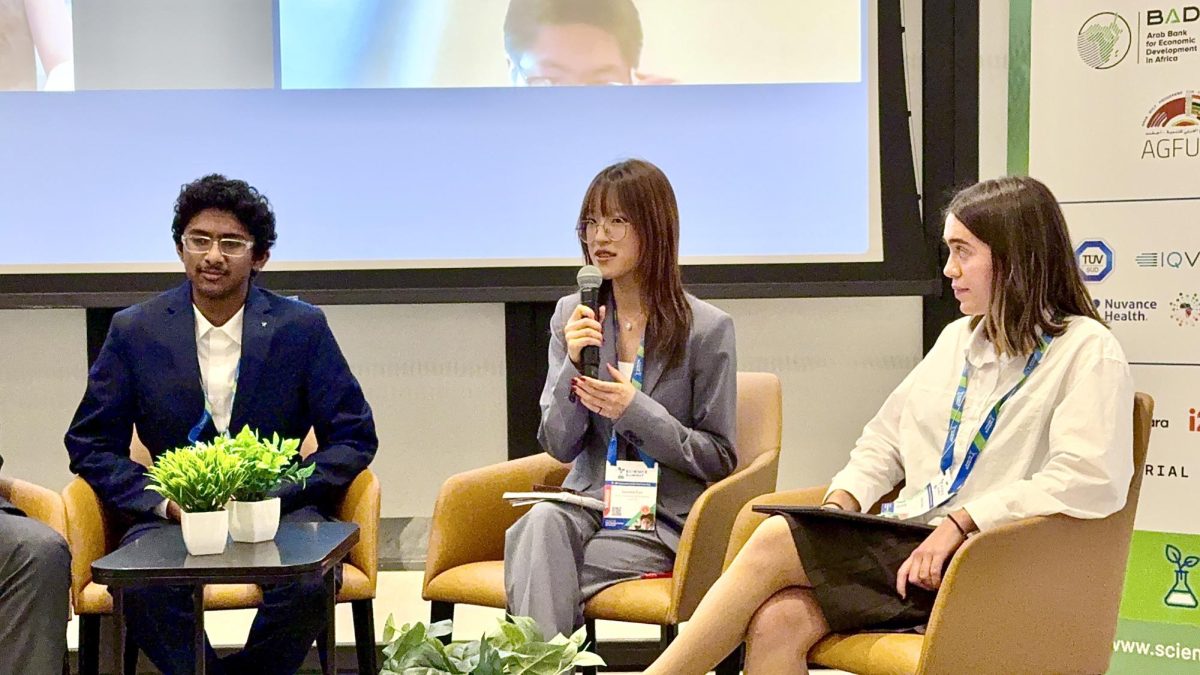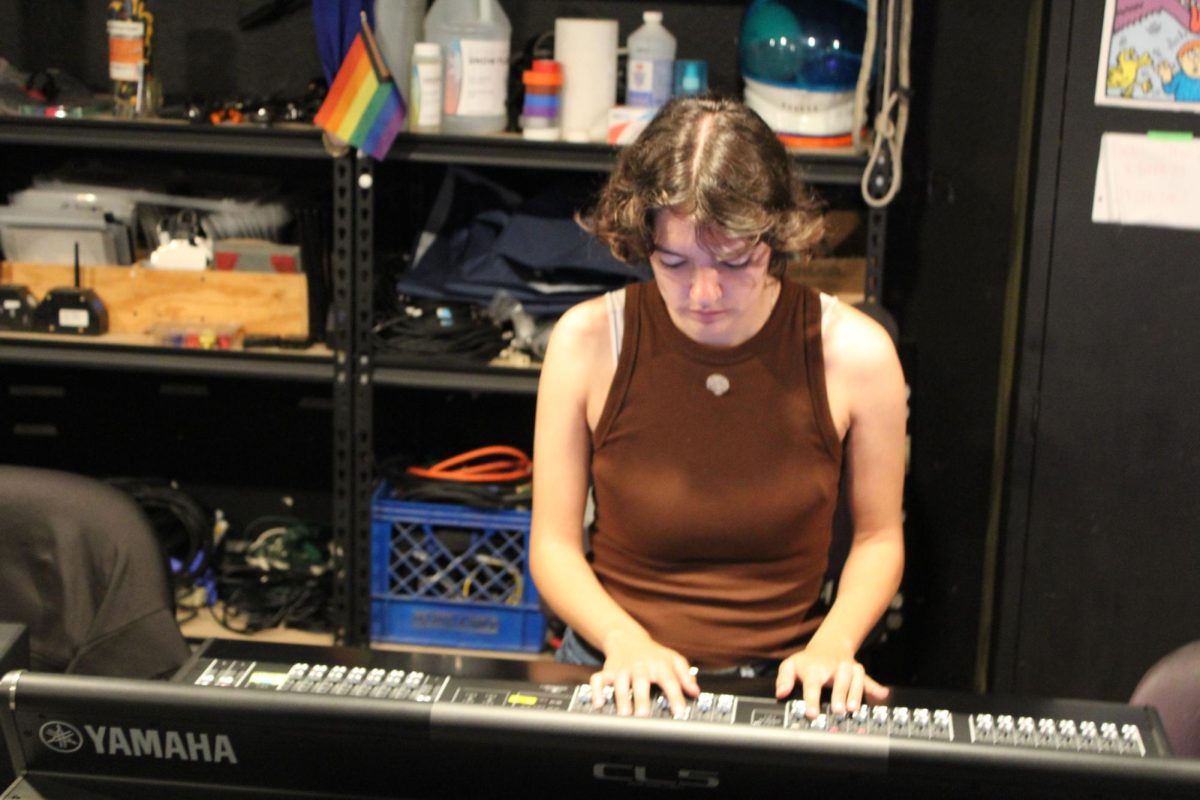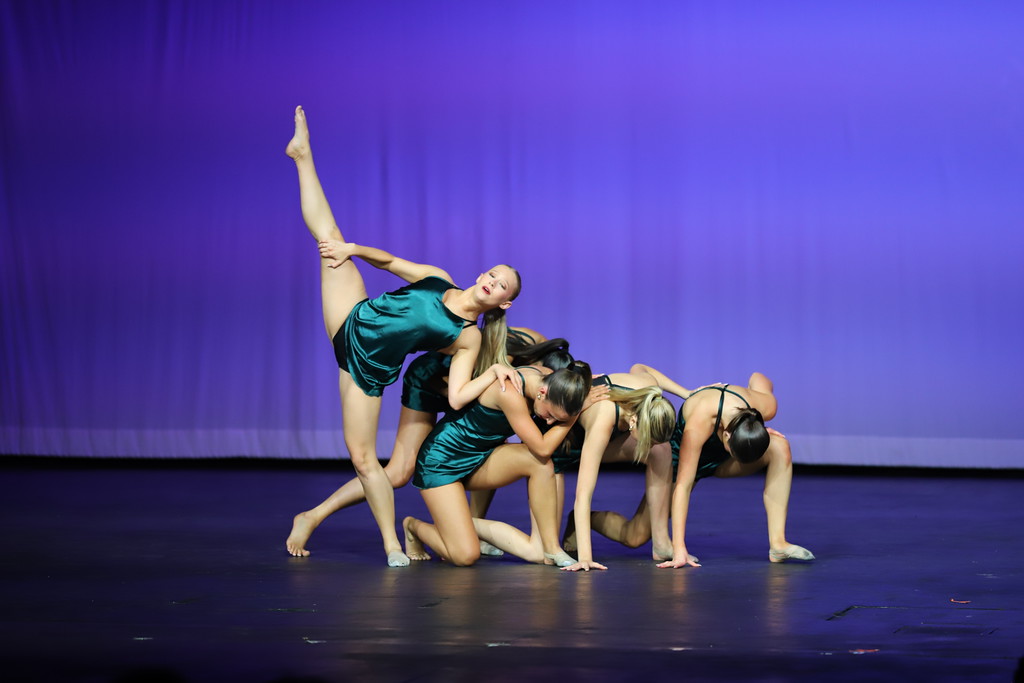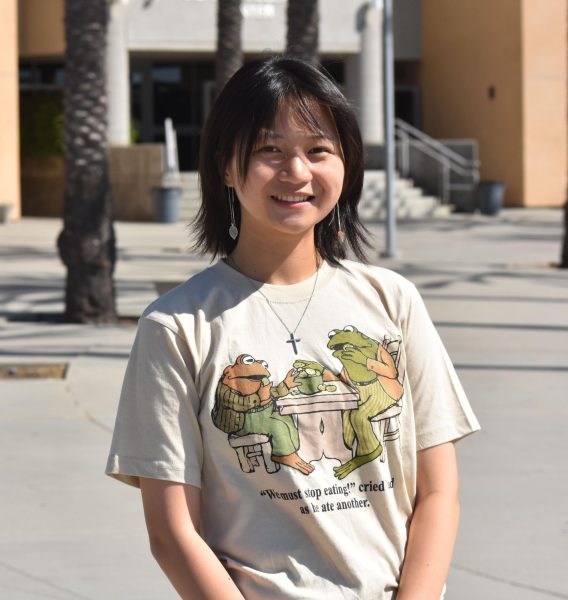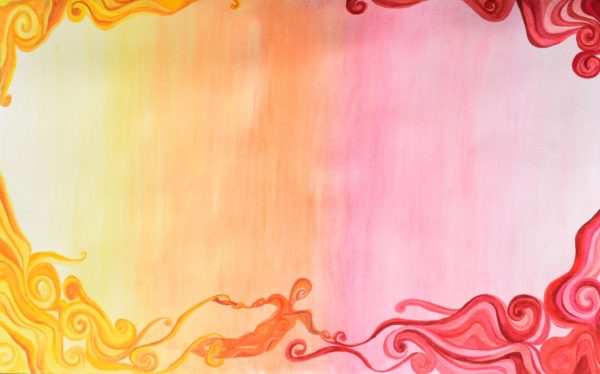
Ella Bergsmedh (10) felt like an imposter. Although she’s both Swedish and Korean, she doesn’t have the typical blonde hair and blue eyes of a Swedish person and her facial features don’t match those of a Korean.
She felt stuck somewhere in between.
Bergsmedh’s Korean mom was adopted by Swedish parents at six months old and didn’t have an interest in learning about Korean culture or picking up the language. Her dad is a native Swede, so culturally, Bergsmedh felt Swedish.
In an attempt to tap into her Korean heritage, Bergsmedh tried to learn Korean in fifth grade with her friend who was also half Korean, yet she was far from proficient. She always spoke to her parents in Swedish, as it was all of their first language. She celebrated Swedish holidays and started trying out Korean recipes in her tween years.
All of her known extended family lived in Sweden, and she had some blood relatives in Korea, though Bergmedh wouldn’t consider them family. However, to others, Bergsmedh didn’t look Swedish; she didn’t look Korean either.
“When people ask me ‘what are you?’, I always start with Swedish because that’s what I feel the most, and they’re like ‘oh really?’ and kind of give me a look,” Bergsmedh said. “If they ask, then I’ll be like ‘My mom is Korean, so I’m half Korean,’ but it does make me feel a little weird saying it.”
After finding out that Bergsmedh was part Korean, they’d ask her one of two questions: “Do you speak Korean” or “Do you have family in Korea?”
Both of which, she would have to respond to with “no.”
Even though Bergsmedh loved much of the Swedish culture that was a dominant part of her life, she couldn’t help but feel like something was missing.
“I just knew myself as Swedish, but when I got older and realized that my mom doesn’t necessarily look Swedish, that’s when I started to question [things],” Bergmedh said. “That kind of sparked me wanting to know more. I could live my whole entire life without knowing [about Korean culture], but it’s a part of me that I’d like to explore and that I feel is somewhat missing. I feel like if I did explore it, then I’d feel more complete since it is 50 percent of my genetics.”
Sycarah Fisher, an Associate Professor of Psychology at the University of Georgia, said that it’s really important for families to support students’ investigations into their cultural backgrounds.
“If parents and families don’t engage in this racial socialization process, the kids are left to develop and to come up with their own thoughts and ideas,” Fisher said. “It’s important for parents to have the skills to support their kids and their identity development and to not make their kids have to pick one as they’re growing up because that creates more internal dissonance and stress for the kid that’s having to figure it out.”
According to a study Fisher and a group of other researchers did in 2014, multiracial youth tend to experience more confusion and less commitment to their ethnic group(s). In that same study, Fisher’s research group said that high levels of affirmations of any type could promote mental health, as well as acceptance of their ethnic background.
Haven Reed (12) also has an interest in learning about her background.
Being Native American, Black, White, Mexican, and possibly other things due to her Grandma’s unknown background, Reed never had a definitive culture in which she could group herself.
“I’m so mixed that [my family] didn’t have any [one culture],” she said. “We’ve become our own culture because we’re so diverse. I hear my friends talking about holidays they celebrate or things they do with their family. My family doesn’t really do all of that stuff.”
Fisher said that before interracial marriage was legalized in the United States, there were quite a few multiracial children. However, after interracial marriage became legalized in 1967 by the Supreme Court, the population of multiracial people started growing rapidly.
“South Carolina had their own part of town for the mixed race individuals,” Fisher said. “Once it was legalized, and you had more integration of people, especially in more integrated metropolitan areas, cities, coastal areas where you’ve got a lot of different racial and ethnic backgrounds.”
Growing up, Sora Page (11) and her older sister had to move around to different areas in California. In 2015, her family moved to Lincoln Military Housing, a housing complex specifically for military service members, as their dad was an active Marine. There, Page and her sister made a small group of friends, all of whom had white dads and Japanese moms, just like herself.
“In school, there [weren’t] very many half-Japanese, half-white kids that I could relate to, so I definitely found myself relating to [the military housing kids],” Page said.
Fisher said that it’s important for multiracial students to have clubs or affinity groups with other mixed students.
“[A multiracial student could be] sitting in between two communities and they’re like ‘I don’t know which one I’m supposed to go to,’” Fisher said. “It creates an additional stressor.”
As Page started getting older and moved to new places, she didn’t experience the same Japanese cultural presence socially as she used to, even though she still kept in touch with her friends from Lincoln Military Housing. Before she realized it, Page’s attachment to Japanese culture started dwindling.
“[Not having people to relate to] was isolating in a way,” Page said.
“Now I’m almost out of high school and I feel like I could have done something with my background and culture. I could have done more to embrace it.”
According to Fisher, a big part of forming cultural identity has to do with not only family, but also surroundings.
“Community [has a] really large influence on like how they form their identity and like what they consider to be themselves,” Fisher said. “I’s kind of interesting because your experiences in this world aren’t, are almost not as related to how you see yourself, like you said, but how other people see you and perceive you.”
To Thomas Nechodom (12), some parts of understanding his Filipino culture were a struggle.
Nechodom, who’s Native American, Filipino, and European, said he feels the most Filipino.
However, even though he grew up with Filipino culture, Nechodom said he still feels like an outlier with his family.
“I’m mixed, the majority of my cousins and my uncles are not mixed, so being the only mixed person in my family, I have different standards,” Nechodom said. “Knowing how to speak Tagalog is a very big standard, as well as the cultural differences that come with it. All my cousins know how to speak it and I wasn’t very proficient at learning different languages.”
The different cultural standards of Nechodom’s two sides of the family are things that he had to learn and get used to.
“Learning how to greet people was a very big difference [between different sides of the family],” Nechodom said. “With my dad’s family, I just walk in and say hi and hug them compared to my Lolas and Lolos where I have to mano po [a greeting that shows respect to grandparents in Filipino culture] them is a lot different.”
The first time Nechodom had to learn how to mano po [a Filipino greeting that shows respect to elders] his Lolas and Lolos was at church.
“We were all being very formal and I was just standing to the side, not really knowing what to do because I was never raised in that way,” Nechodom said. “My mom was like ‘Come over here,’ and I had to learn. It was slightly embarrassing. I felt like I was disconnected from the culture.”
Linea*, who has a Japanese mom and a white dad, used to attend a Japanese immersion Saturday school meant to keep kids in the U.S. aligned with the Japanese school system. She felt the opposite of a disconnect with Japanese culture as she grew up with it heavily influencing her household.
Overseas, one of the many things that Linea had to face was how other Japanese people viewed her to be, solely based on how she looks.
“I’ve had to recognize and understand that I’m never gonna be Japanese enough to be considered Japanese there, but I grasp[ed] onto that kind of quickly,” Linea said. “Even if I do speak Japanese at a native level, I know I’m gonna be treated as a foreigner if I go [to Japan].”
According to Fisher, it’s not rare for people to sort multiethnic youth into one ethnic box and not multiple.
“It’s like if you saw an apple and an orange mixed together, and you’re like ‘I mean, it has the stem and it’s got the seeds in the middle and a core like an apple, but it’s squishy like an orange,’” Fisher said. “People who are confused are just going to push [people] to choose one [ethnicity].”
Despite some negative experiences that Linea has faced due to being biracial, she has also been able to make new friends because of it.
“I got really lucky that anime got popular around the time I was in third grade because that made me being half Japanese cool,” Linea said.
Fisher said that this ability to do better socially because of being multiethnic isn’t rare among multiracial people.
“Multiracial individuals are able to use their identities to navigate different social circles,” Fisher said. “A lot of them have talked about the fact that it’s a strength for them to be able to move in and out of different types of racial and ethnic background circles because they’re multiracial. They have great opportunities to build bridges between different types of communities.”
For Bergmedh, Korean culture becoming more mainstream dmade it even easier for her to investigate things such as Korean fashion, traditions, and recipes.
“I feel more complete,” Bergmedh said. “When I do find out more about that part of myself, it also creates more of a disconnect because I’m like ‘Wow. There’s so much that I didn’t know and that I can’t really relate to.’ It’s very interesting, but it almost makes you feel more disconnected.”
Even so, Bergmedh said she’s found the process of learning about Korean culture an enjoyable one. One of the ways in which she ventured into Korean culture was through cooking.
Fisher said that the discovery and expression of culture like this can be really beneficial to multiracial people.
“What I always try to tell people, especially if they’re raising multiracial kids, is that it’s best to help them identify and integrate both identities. [Show them] that ‘I’m not one thing and I’m not the other thing, I’m both,’” Fisher said. “[That] ‘I’m both black and white,’ ‘I’m both Asian and Latinx,’ that ‘I’m both this and this,’ and that ‘I’m okay to be that and I don’t have to pick.’ And those people who actually do identify themselves as multiracial, as ‘that’s my identity,’ have better mental health outcomes than those who pick one or the other.”
In Fisher’s study, she found that being able to have a strong connection to one’s culture tends to serve as a “protective factor against damaging social contexts and subsequent negative psychological outcomes for minority youth.”
For Reed, she tried getting more in touch with her different ethnic groups by celebrating some of their holidays. Reed had always wanted to celebrate the Day of the Dead and after repeatedly asking her parents if they could celebrate it, they agreed.
“We all gathered around the counter and we listened to a couple of Day of the Dead songs,” Reed said. “We just sat together and made bread. We had Day of the Dead decorations up, and I felt like ‘Oh! I learned a lot of things today.’”
According to Reed, celebrating the Day of the Dead with her family was one of the first times she felt so connected to Mexican culture.
“It was great,” Reed said. “Those little moments of having connection or learning about my family’s past has brought me closer [to] feeling more connected with those cultures that my family had not celebrated [before].”
Reed said she enjoyed finding out more about her Mexican culture and increasing her connectedness to it. In addition, she also felt grateful for being mixed.
“I’d say [being mixed] gave me a clean slate because I don’t feel like I have to be any type of generic stereotype that associates with my race,” Reed said. “I [can] really embrace being myself.”


